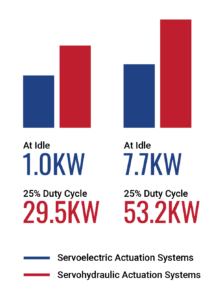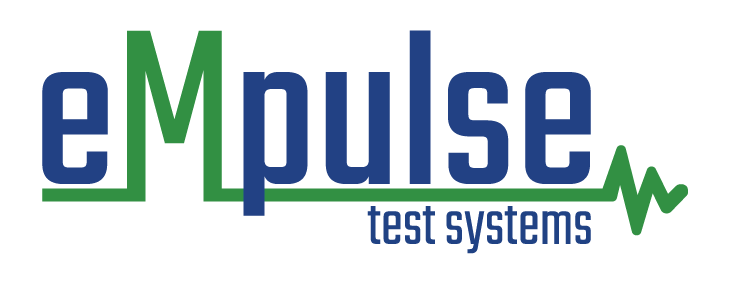Servoelectric Energy Consumption
Servoelectric actuation (SEA) systems are known for their energy efficiency, reliability, and
sustainability in industrial testing applications. Integrating SEA technology enhances testing
processes and leads to overall operational improvements such as lowered energy use, reduced
maintenance, and improved control.
During Operation and at Idle
SEA systems demonstrate an advantage in energy efficiency over their servohydraulic counterparts. During a typical operation cycle with a 25% duty cycle, SEA systems consume significantly less energy, with a total power requirement of 7.7kW compared to the 53.2kW required by servohydraulic
systems. Even at idle, SEA systems require only 1.0kW of power compared to the 29.5kW needed by hydraulic systems.
This efficiency translates into a dramatic reduction in energy costs, with SEA systems operating at less than 20% of the energy cost of comparable hydraulic systems.

Maintenance and Reliability: A Paradigm Shift
SEA systems significantly reduce maintenance needs and operational costs through streamlined design and fewer moving parts, eliminating common issues like fluid leaks and component wear seen in hydraulic systems. The absence of hydraulic fluid and oil reservoirs simplifies maintenance, while the durability of electric motors and modular design minimizes downtime and spare parts costs. Additionally, replacing servoelectric components is more cost-effective than the extensive servicing required for hydraulic systems.
The Principle of Regenerative Energy in Servoelectric Systems
These systems leverage bidirectional motor operation, allowing them to both drive loads and act as generators. During braking or deceleration phases, these motors reverse their function, generating electrical currents that push energy back through the system. This regenerative capability enables the conversion of kinetic energy into electrical energy, which can be redirected for various purposes.
The regenerated energy can be routed back into the system, offsetting energy consumption, or the regenerated energy can be routed back into the grid.
Reduced Heat Generation
SEA systems generate significantly less heat due to the conversion of electrical to mechanical energy. Additionally, this decrease enhances the operational efficiency and safety of the system while also contributes to lower cooling requirements, further reducing energy consumption and operational costs.
SMARTER. SUSTAINABLE. SERVOELECTRIC.
The move towards servoelectric systems represents a major step forward in enhancing energy efficiency and sustainability in industrial testing and manufacturing sectors. Utilizing the built-in benefits of servoelectric technology, including lower energy use, the ability to reuse energy, and decreased heat output, industries can attain higher operational effectiveness and reduce their environmental impact.
Download Energy Consumption Overview
Related Articles
Servoelectric vs Servo Hydraulic Whitepaper
Download our white paper to learn more about the benefits of SEA and it's comparison to traditional hydraulic systems.
Precision and Durability Testing: seaPLUS Advantage
Read our article to learn why our servolectric actuation systems are the optimal choice for durability testing.
For an in depth comparison between a SEA and Hydraulic actuator please download our white paper.
